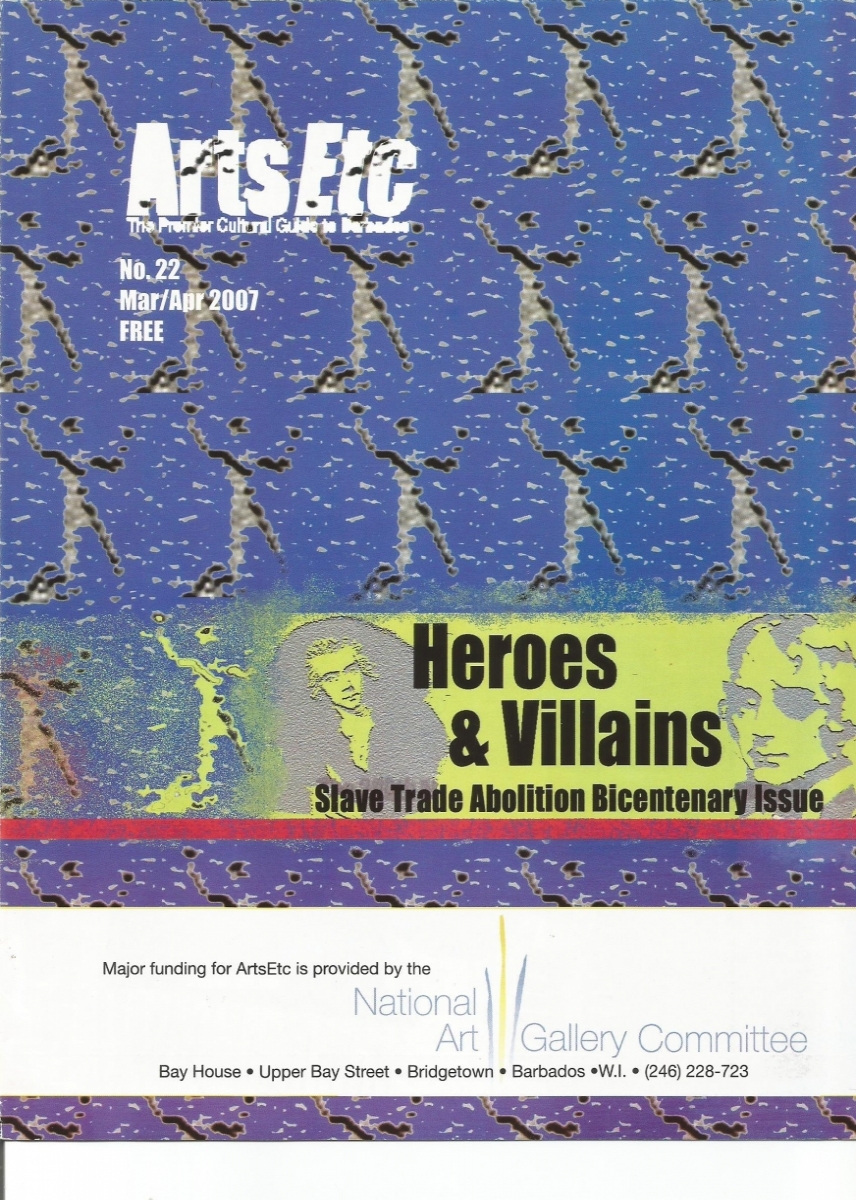
ArtsEtc Inc. 1814-6139
All works copyrighted and may not be reproduced without permission. ©2013 - hoc anno | www.artsetcbarbados.com
All works copyrighted and may not be reproduced without permission. ©2013 - hoc anno | www.artsetcbarbados.com



Published: March/April 2007
Theme: Heroes & Villains: Slave Trade Abolition Bicentenary Issue
Cover: Heroes and Villains (depicting Bussa, Wilberforce and Nelson)
Contributors: Aguinaldo Belgrave, Carolle Bourne, Ian Bourne, Jane Bryce, Alison Chapman-Andrews, Matthew Clarke, Esther Jones, Trevor Marshall

BackPage Say #22
Overblown trumpets
By Jane Bryce
What do we mean when we say we know someone “by repute”? That we know what we’ve heard, what others say about them? What if that someone is an artist? Does her reputation rest solely on the merit of her artistic work, or is it somehow constructed out of perceptions as to its intrinsic value, measured by winning a prize, being featured in the media, commanding a high price in a gallery, being a set text for the Caribbean Examinations Council?
In a place like Barbados, with its history of colonization, reputation inevitably becomes bound up with nation building and the redressing of political wrongs. To this extent, reputation often rests on the extent to which you can demonstrate your Barbadianness. The two towering artistic reputations to have come out of Barbados are, of course, those of Lamming and Brathwaite, whose names have acquired talismanic status. Ironically, the reverence we feel for them arises partly from their recognition outside, as if we still need the approval of over there for what happens here.
While it’s natural to be proud of sons of the soil who’ve made it, there’s a downside to this emphasis on national identity. It gives rise to a belief that to be an artist it’s enough to want to be one: never mind the discipline of learning your craft, making sacrifices to improve by tiny increments over time, submitting to criticism or any of the other rigours usually undergone by artists. No, write some doggerel about the beauty of sugar cane and the strong black woman bending her back to the master’s lash, and you’ve earned it—a reputation as a poet.
Perhaps would-be artists overblow their own trumpets because, in fact, artists are undervalued in this society. What are we to make of the fact that public monuments—roundabouts in particular—all over the island are named after cricketers and politicians, with only two prominent sites named for Frank Collymore and Jackie Opel? Are there no other artists whose names or reputations inspire us equally? Is art the soul of a nation, or is it merely decoration?
Jane Bryce teaches creative writing and African and Caribbean literature at the University of the West Indies, Cave Hill. Her most recent books are the anthology Caribbean Dispatches: Beyond the Tourist Dream (Macmillan Caribbean) and the collection Chameleon and Other Stories (Peepal Tree Press).